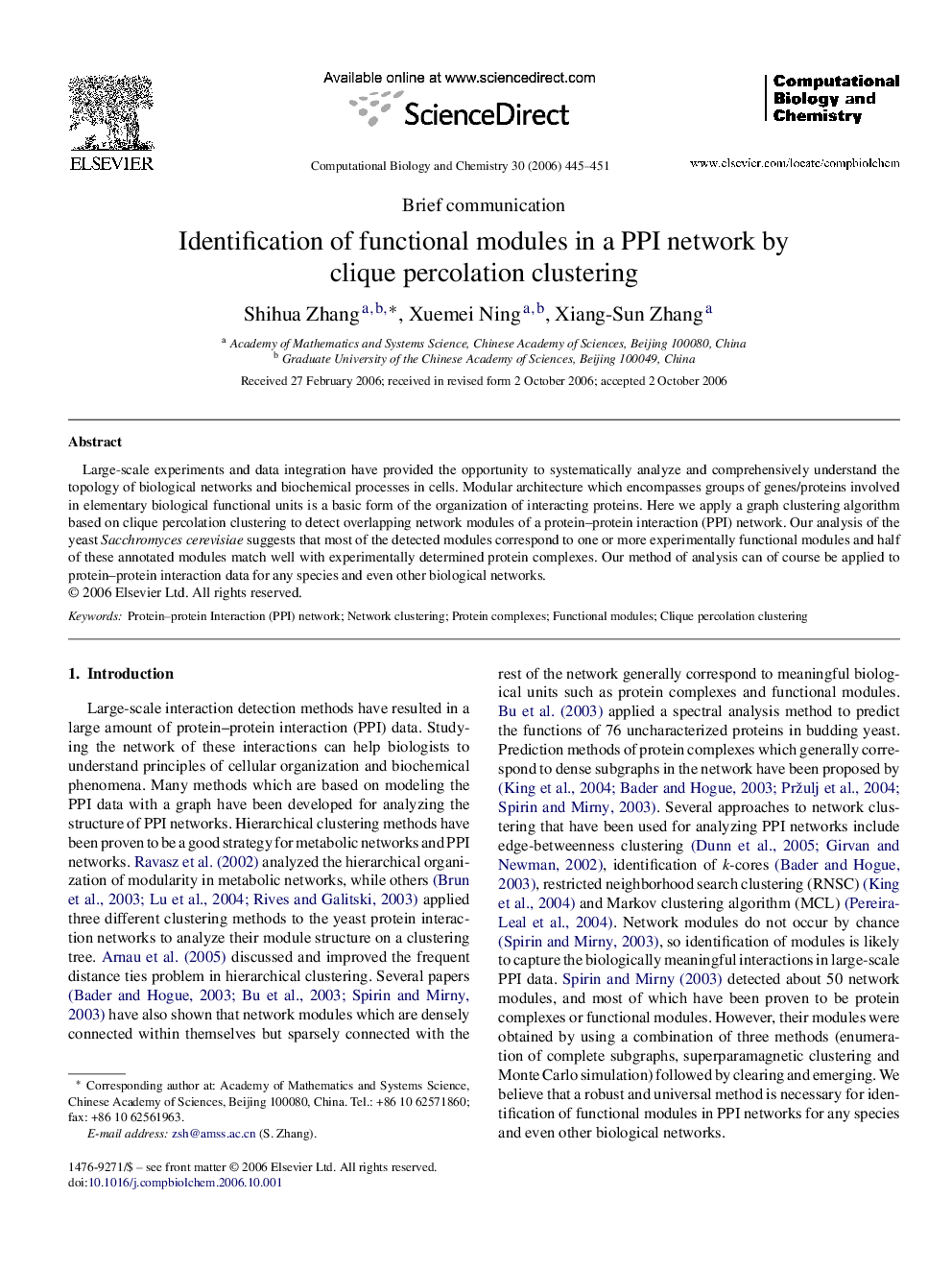| Article ID | Journal | Published Year | Pages | File Type |
|---|---|---|---|---|
| 15404 | Computational Biology and Chemistry | 2006 | 7 Pages |
Large-scale experiments and data integration have provided the opportunity to systematically analyze and comprehensively understand the topology of biological networks and biochemical processes in cells. Modular architecture which encompasses groups of genes/proteins involved in elementary biological functional units is a basic form of the organization of interacting proteins. Here we apply a graph clustering algorithm based on clique percolation clustering to detect overlapping network modules of a protein–protein interaction (PPI) network. Our analysis of the yeast Sacchromyces cerevisiae suggests that most of the detected modules correspond to one or more experimentally functional modules and half of these annotated modules match well with experimentally determined protein complexes. Our method of analysis can of course be applied to protein–protein interaction data for any species and even other biological networks.
